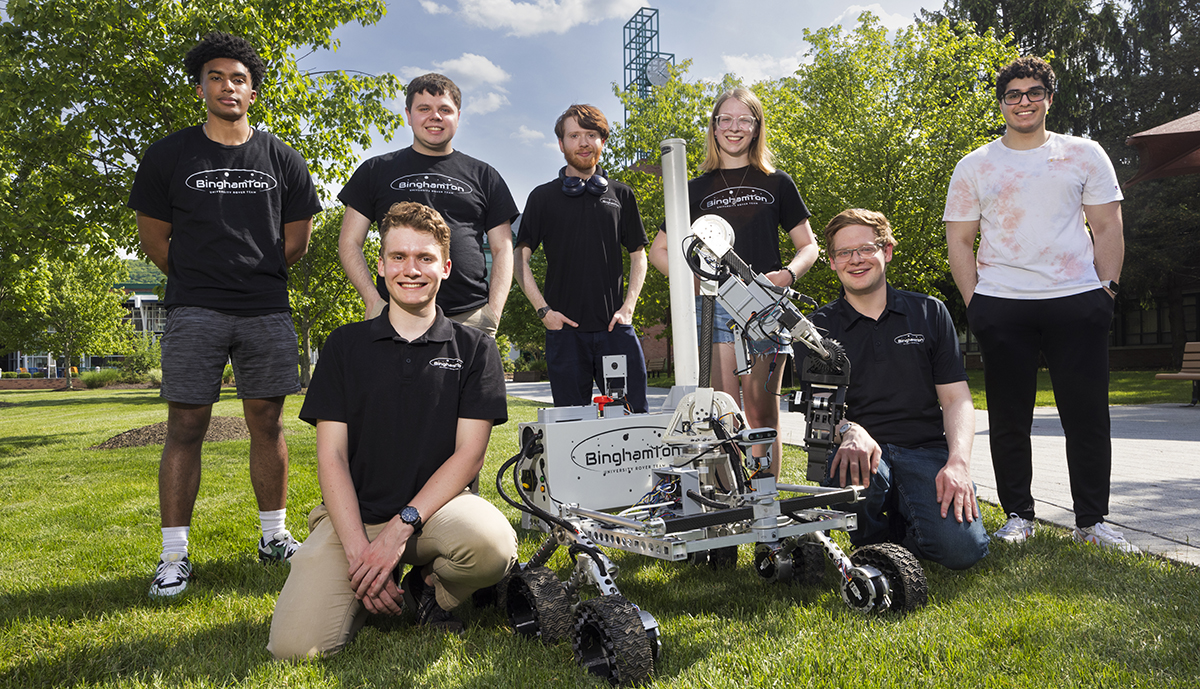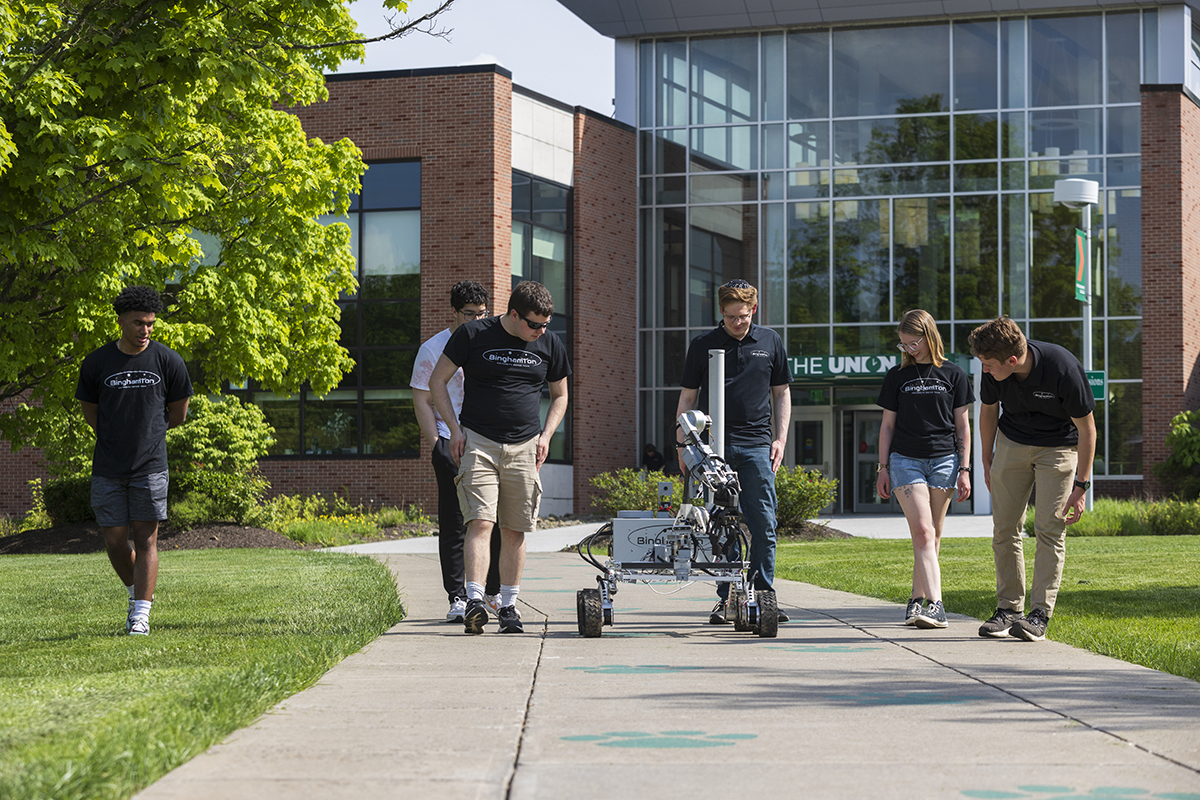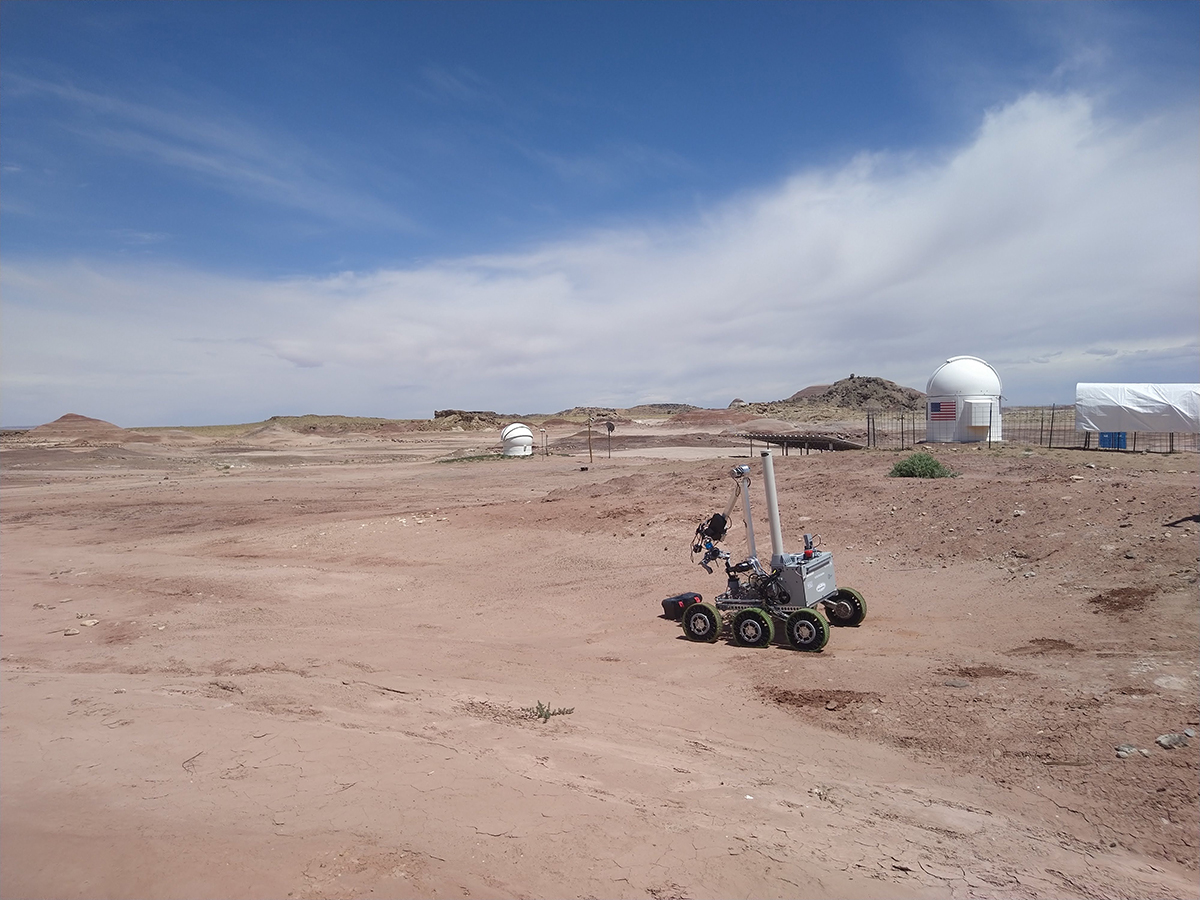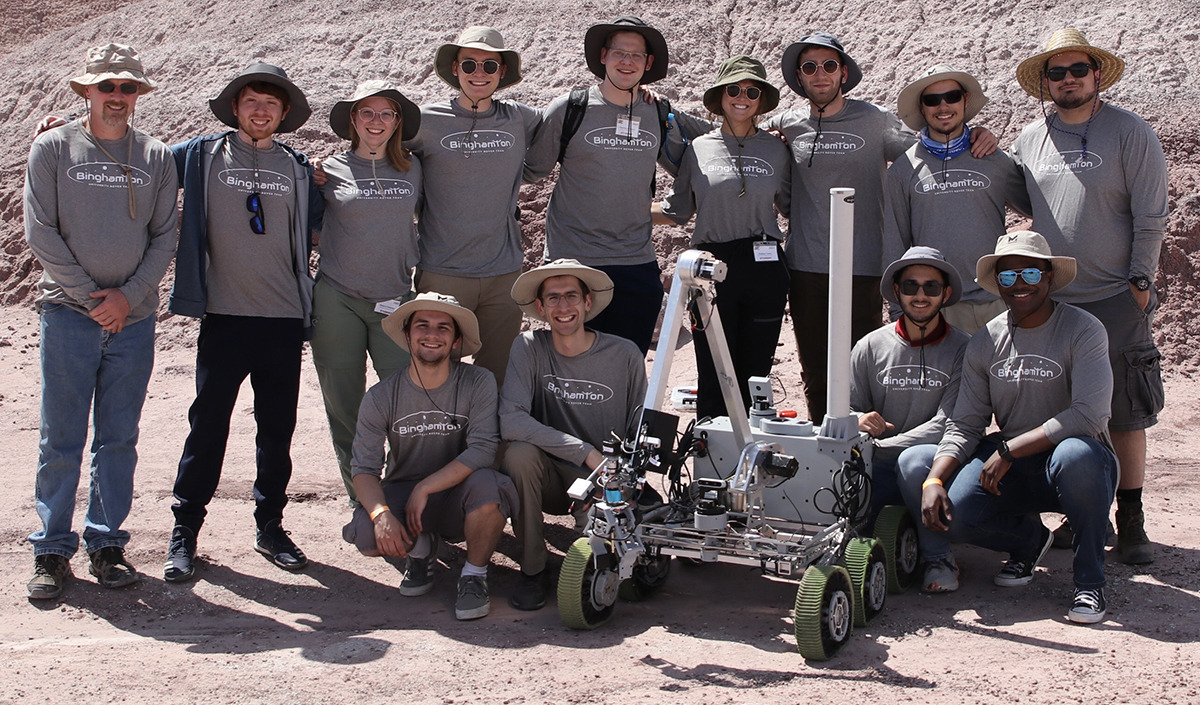Binghamton University Rover Team heads to international competition for second year
Judges chose Binghamton as one of 38 finalists among 102 teams from 10 countries that will converge in Utah

The Binghamton University Rover Team is returning for a second year to the University Rover Challenge in the Utah desert — and this time around, they have a better idea of what to expect.
“We learned a lot last year about how the competition is structured and what types of tasks you need to compete in the field,” said Jonathan Sarasohn ’24, the team’s chief mechanical engineer. “We’re able to take those lessons and use those to further improve on our rover. We’ve made some improvements, so we hope to perform even better this year.”
The annual University Rover Challenge, organized by the nonprofit Mars Society, brings together college students from around the globe to decide who can make the best vehicle to survive on Mars or similar alien planets.
Judges chose Binghamton as one of 38 finalists among 102 teams from 10 countries that will converge at the Mars Desert Research Station in Hanksville, Utah. About 75 students were part of this year’s Binghamton team, and 16 will travel to the competition from May 29 to June 1.
“Just getting to the site is an adventure,” said Thomas Wiedmann ’24, the team’s chief electrical engineer. “It’s 3 miles down a road named Cow Dung Road if that inspires your imagination to what it’s like. It’s probably the loneliest road I’ve ever been on, through the Utah desert. There are no signs of life for the first 3 miles, and then out of nowhere springs this Mars-like dome habitat in the middle of nowhere. Seeing that for the first time was really cool.”
There are four main tasks that judges will score to determine a winner. One is the ability to find a predetermined location autonomously, using cameras and sensors to traverse that journey without bumping into things or getting stuck. Another is the science system that needs to collect and analyze soil samples for chemical composition or signs of microscopic life. The third is building a robot arm that must manipulate different objects such as a drawer, a keyboard and a series of switches to show its ability and dexterity. The final one is using the arm to retrieve and deliver large objects such as rocks and toolboxes.
“When you’re there, the competition is very different,” Wiedmann said. “The actual environment is not quite as rigid as the rules make it seem. There’s a lot more variety in the terrain and how the missions are set up. I was expecting a cleaner overall environment, but it really felt like we were on Mars.”
Professor Douglas Summerville, MS ’94, PhD ’97, chair of Watson College’s Department of Electrical and Computer Engineering, is the Rover Team’s faculty advisor. He traveled with the students to Utah in 2023 and will join them again this year.
“The team did a fantastic job turning the lessons they learned in the desert last year into new and improved subsystems,” Summerville said. “On the long drive back to Binghamton last year, we spent a lot of time talking about things that should be changed. By the start of the fall semester, I was pleasantly surprised that the team had not only designed many of the new subsystems but were ready to prototype. Their agility and adaptability is amazing.”
The organization of the Rover Team is similar to a tech startup, divided into five sub-teams: software, human-robot-environment interaction, environmental analysis, electrical and drive system. Although many members are from the Thomas J. Watson College of Engineering and Applied Science, students from disciplines all over campus take part in the project.
One key change based on the team’s experience in Utah last year was switching the design for the rover’s gearboxes and motor controllers. They spent a lot of time last year cleaning sand out of the gearboxes and dealing with broken 3D-printed parts, and because they have only 10 to 15 minutes to get the rover ready at the start of a task challenge, every second counts.
“Switching to this integrated system significantly reduced the types and the number of issues we were having,” Sarasohn said. “It’s allowed us to turn the rover on and get it driving right away, which is something we struggled with last year. It cuts into our competition time when we need to work those bugs out.”
Another cool thing about going to the finals: Seeing how different teams try to solve the same challenges. Many rovers — like Binghamton’s — are built around the six-wheeled “rocker-bogie” design that NASA has used for Mars exploration robots such as Spirit and Opportunity because of its ability to overcome obstacles in its path. Some have four wheels, and others are built from innovative materials or fold out to become much bigger than other rovers.
There’s also some time for socializing: “At the beginning and the end of the competition, there are barbecues where the teams can gather and discuss things with each other,” said Rebecca Carpenter, who leads this year’s environmental analysis sub-team. “We talked to a variety of different teams, both from the U.S. and internationally. It was really cool to see what everyone else was doing and build off of their knowledge, especially the teams who have gone to competition year after year.”
None of the Rover Team’s accomplishments would be possible without support from Watson College and the Electrical and Computer Engineering Department as well as sponsors and donors such as Geraldine MacDonald ’68, MS ’73, LittD ’17; IBM Corp.; Zyltech Engineering LLC; CubeMars and RLS.
Even before the University Rover Challenge finals, Sarasohn and Wiedmann collected their diplomas at Commencement earlier in May. Sarasohn will work as a project engineer at Stryker through its Advanced Operations Global Engineering Development Program, and Wiedmann will start as an electrical engineer at Chentronics.
For the 2024-25 academic year, Carpenter will take the reins as the Rover Team’s chief engineer.
“I’m very excited. A little bit nervous!” she said with a laugh. “I definitely have some big shoes to fill, but I’m excited to see how the competition goes this year and how we can keep improving.”



